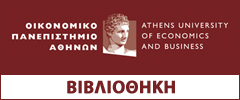| Περίληψη : | The scope of the current doctoral research is twofold. Firstly, to provide support to the inference that cost behavior is driven by managerial incentives. More specifically, it aims to contribute to the accounting literature by expanding our understanding of how deliberate commitment decisions and particularly decisions that are driven by Earnings Management incentives, affect the asymmetric cost behavior. According to the literature, managerial discretion is intricately linked with Earnings Management which is an essential dimension of earnings quality (Dechow, and Schrand, 2010). There are different methods available to isolate the effects of managerial discretion on Earnings Management. Drawing on the earnings quality literature we build on the concept of Sticky Costs by examining the following research question: “Are the differences on the degree of cost asymmetry attributable to firm-level and cross-country differences on earnings quality?” The first subject of the doctoral study is the impact of the different management accounting practices on managerial cost behavior and as a result on Cost Stickiness. A managerial implication of this inference is that a better understanding of firm-level and cross-country differences in cost behavior, through Sticky Cost phenomenon, contributes to the recognition and control of Earnings Management practices. Our evidence is also useful for investors in forming their beliefs about firm‟s value. Literature suggests that investors misvalue firms with intense earnings manipulation. They should consider Sticky Cost behavior in their investment decisions, since low (high) level of Cost Stickiness could be a negative (positive) signal about firm‟s accounting quality, suggesting higher (lower) pervasiveness of Earnings Management. Our findings endow the growing Sticky Cost theory with an additional significant factor, by providing large sample empirical evidence for the influence of earnings quality in moderating the SG&A Cost Stickiness. By documenting the asymmetric cost behavior for a panel dataset of the G-7 countries, the analysis presented here also introduces an empirically grounded discussion on the global nature of the Sticky Cost phenomenon. Secondly, the current doctoral research is centered in studying the role of incentives stemming from factors that improve the firm‟s value generating process, in affecting cost behavior. Firm‟s orientation towards intangible related resource consumption is one of the most important factors that coins firms‟ ability to deliver and sustain superior performance (Lev et al., 2009). This study focuses on firms‟ internal view for intangible related resource consumption as investments versus expenses and shed light on some aspects of the value generating process associated with intangibles. Organization Capital, which is selected as a control variable that improves firm‟s value generating process, is one of the most important unreported intangible assets. Consequently, an interesting question is raised: “How firms‟ behavior towards intangible investments affects the cost behavior of SG&A expenses?” The evidence on the above research question contributes on the Cost Stickiness literature by diagnosing firms‟ intensity on intangible investments as another contributing factor of the Cost Stickiness phenomenon. A new managerial implication of the study‟s findings is that firm‟s Organization Capital intensity influence managerial resource commitment decision making. In high Organization Capital firms, managers have a relative long-term oriented performance horizon. They maintain discretionary SG&A expenses after sales declines, because they view them as investments that will improve firm‟s future operational performance. On contrary, low Organization Capital intensive firms have short-term horizon and their managers behave myopically. These evidences have implications in the financial statement analysis. When users of the financial statements analyse the financial position and the performance of a company, they have to take into consideration the firms‟ behavior towards intangible investments. For example, when financial analysts compare SG&A expense items as a percentage of net sales across time or within an industry, they view a disproportionate increase/decrease in these expenses as a negative signal of firm‟s operation. This may be a misleading conclusion because the disproportionate behavior of the SG&A expenses may be due to firms‟ orientation towards intangible investments. The current doctoral research, also, contributes on intangibles related literature. It documents that the behavior of intangible related expenses deviates from microeconomic traditional cost model which indicates that relation of intangibles with firms‟ value generating process is more complicated to be modelled with traditional economic theories.
|
|---|







 Copyright © 2013 Βιβλιοθήκη Ο.Π.Α. Με την επιφύλαξη παντός δικαιώματος.
Copyright © 2013 Βιβλιοθήκη Ο.Π.Α. Με την επιφύλαξη παντός δικαιώματος.